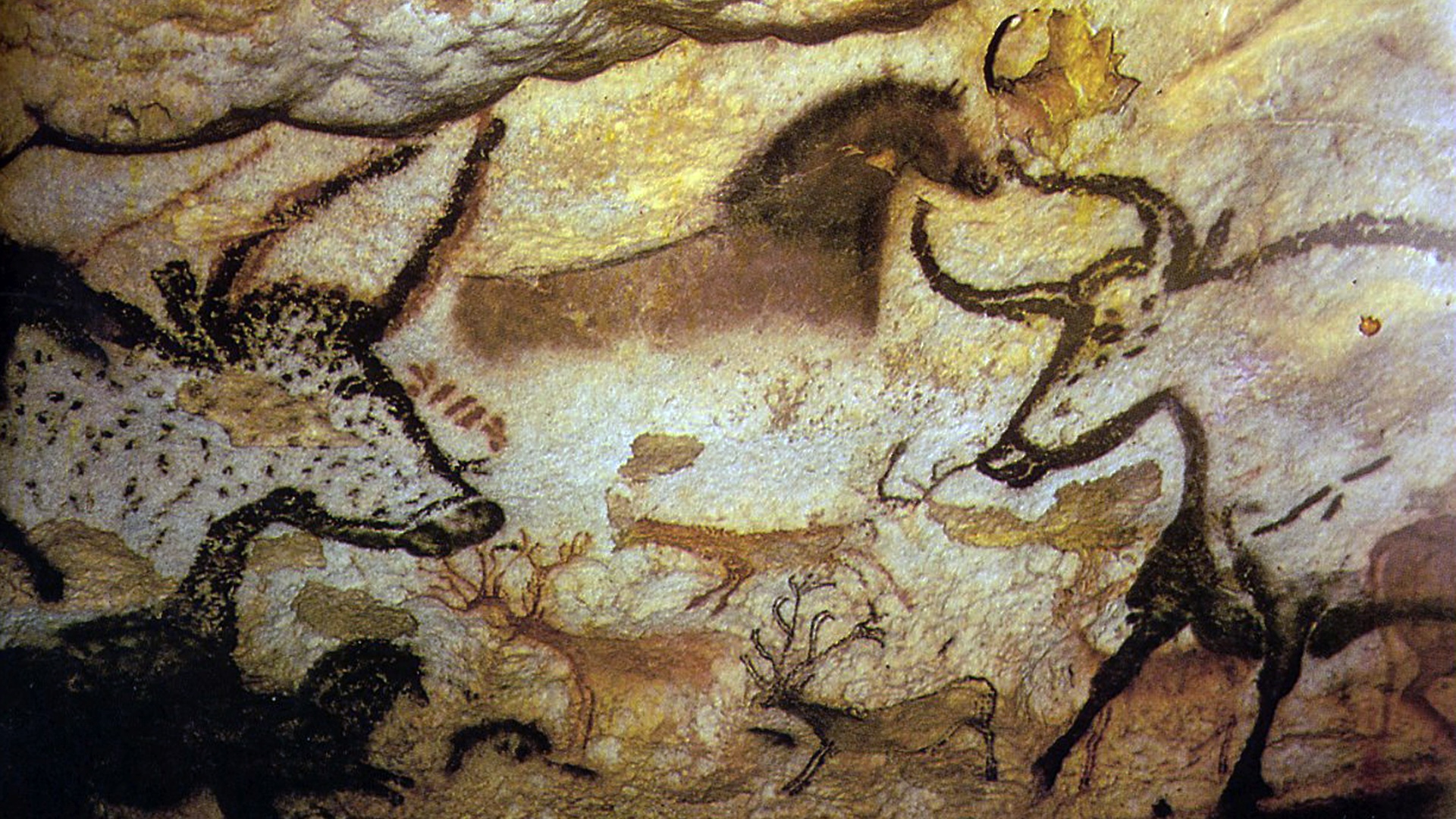The meaning of colors: How 8 colors became symbolic
The meaning of colors can including anger, virtue, death and royalty.

The meaning of colors are often imbued with great symbolic power. Even in the modern English-speaking world, where superstitious beliefs have largely faded in the light of scientific knowledge, many colors have retained their ancient associations.
Most people know that brides often wear white, that "seeing red" means being angry, and that one can feel "green with envy." But learning why these connotations exist requires a look back to the beliefs and practices of the ancients.
Red

Red has a range of symbolic meanings through many different cultures, including life, health, vigor, war, courage, anger, love and religious fervor. The common thread is that all these require passion.
In moments of rage, lust or embarrassment, bright red oxygenated blood rushes to the skin's surface as a response to your “fight or flight” sympathetic nervous system. There are many theories as to why human and non-human species have evolved this physiological trait, however many center their conclusions around asserting dominance or appearing more attractive to a potential mate, according to the journal Philosophical Transactions of the Royal Society B.
In relation to dominance, the colour red has even been found to impact the world of sport. A study published in the journal Nature found that several soccer teams achieved greater match results while wearing predominantly red shirts than while playing in other colours, such as white and blue.
Colors were so powerful in traditional cultures that red objects were believed to convey health through their color alone. For example, most red stones such as garnets and rubies were believed to have health-giving and disease-preventing properties. In Rome, children wore red coral as a talisman to protect them from diseases, and in China, for similar reasons, children always wore a piece of red clothing.
White

Throughout history, white has been synonymous with purity and virtue, which lends itself to many religious ceremonies. For example, wearing white to a wedding dates back more than 2,000 years when Roman brides wore white tunics to signal a woman’s virginity, according to Ohio State University.
However, it wasn’t until Queen Victoria walked down the aisle in a white lace dress to wed Prince Albert in 1840, that wearing white wedding gown became popular. In many Asian cultures, particularly in China, white is not a traditional used for wedding gowns – red or gold may be more commonly seen wedding colors – but is worn instead of black at funeral services and is a symbol of mourning, according to Yerevan State University.
Although white is often referred to as a “color”, white is actually the combination of all the wavelengths of color that are reflected off an object, according to Encyclopedia Britannica.
Black

The colour – or rather adsense of colour– black is often linked with negative associations, such as death, fear or sadness, according to the Journal of international Colour Association.
Many ancient cultures believed that black was "the color of mystery and of the mysterious ways and wisdom of God," historian Ellen Conroy wrote in her book "The Symbolism of Colors" (1921). This was because night, the absence of light, transcended human perception in the same way that the wisdom of God was thought to be beyond comprehension.
Of all mysteries, death may have been the biggest. Ancient people were completely "in the dark" about what would happen to them after death, and so it was (and is) represented by the color black in many cultures. There was the added coincidence of death sharing similarities with sleep, which happens in the darkness of night and when closed eyelids block out all light. Throughout history the color black has also been attached to fearful and mysterious things, such as black magic, black holes, the black plague and so on.
Of course the black isn’t always synonymous with death and despair, especially in the world of fashion. A study published in the journal Color Research and Application found that black was the overall favourite color to wear amongst female study participants.
Purple

Purple symbolizes royalty, nobility and imperialism. In many European societies, the symbolism was even established by law: From ancient Rome to Elizabethan England, "sumptuary laws" forbade anyone except close members of the royal family to wear the color, according to Harvard Law School.
Purple's elite status stems from the rarity and cost of the dye originally used to produce it. Fabric traders obtained "Tyrian purple," as the dye was called, from a small mollusk that was found only in a region of the Mediterranean Sea near Tyre, a Phoenician trading city located in modern-day Lebanon, according to the journal Molecules. More than 9,000 mollusks were needed to create just one gram of Tyrian purple, and because only wealthy rulers could afford to buy and wear fabrics dyed with the color, it became associated with the imperial classes of Rome, Egypt and Persia.
Another consequence of this is that purple also came to represent spirituality and holiness, because the ancient emperors, kings and queens that wore the color were often considered to be gods or descendants of the gods.
Blue

According to Conroy, the primary association of the color blue for most of recorded history was with truth a meaning that leaves a remnant in our language in the phrase "true blue." This was because blue is the color of a calm and clear sky, and it is in calm reflection that leads to truth.
Today, though, blue mainly conveys sadness and despair. When you've "got the blues," you're down in the dumps. The connotation may relate to tears and rain , as water was typically represented in people's minds as blue.
However, research has shown that the colour blue has many positive effects on people. For example, research exploring crime on the streets of both Glasgow, Scotland, and Nara, Japan, found that crime levels decreased in areas where blue streetlights had been installed, according to Psychology Today.
Green

For obvious reasons, the color green represents nature and the environment; more abstractly, it symbolizes wisdom. The latter association has ancient roots.
According to Conroy, the Egyptians believed that a god named Thoth led the souls of the dead to "a green hill of everlasting life and eternal wisdom." Later, the Romans based their god Mercury on Thoth, and the planet Mercury was in turn based on the god. For this reason, in astrology,"green is sometimes said to be the color of the planet Mercury, which is the planet governing the mind and conferring knowledge knowledge not only of the kind essential to material success, but also inspirational knowledge and celestial wisdom," Conroy wrote.
Aside from its association with wisdom, there's a flipside to green. "Green in its degraded sense gives us 'the green-eyed monster jealousy,' which is the direct opposite of celestial wisdom, for jealousy is always due to the intrusion of the desires of the self, while celestial wisdom wishes to give rather than to receive," Conroy wrote.
The color green has also been firmly attributed to the environment – in particular when used to illustrate products or campaigns which support the health of the planet. According to the BBC the word “green” comes from the Proto-Indo-European (ancient people that lived around the 4th millenium BC) word “ghre”, which means “grow”. It is fair to assume that green’s connection to nature lies in its abundance amongst it. The majority of plant’s naturally produce green-colored pigments called chlorophyll which are the sites for the conversion of atmospheric carbon dioxide into breathable oxygen, known as photosynthesis.
Yellow

It isn't surprising that yellow symbolizes happiness, warmth and sunshine in most cultures; these are characteristics of the yellow sun and its effects.
In ancient cultures where a god or gods were associated with the sun, such as Egypt and China, yellow was the highest and noblest of colors and thus, the color of religious figures and royals (who were thought to be descendants of the gods).
Conroy explains that all colors have a flipside, a degraded meaning that traditionally opposed the positive one. Along with warmth and happiness, yellow also represents cowardliness and deceit. "We recognize the deceitful Judas very often in ancient pictures from the fact that he is given dingy yellow robes," she wrote.
Orange

Similarly to red, orange has a range of symbolic meaning and connotations – for example – in many Western cultures orange is often used for fun, strength, courage and creativity, according to the Huffington Post.
In recent history, though, orange has come to denote a warning, and is used for high visibility clothing (such as spacesuits ) and safety equipment (such as traffic cones). This association is a practical one: Orange contrasts most strongly with the color blue and therefore is highly visible against a clear sky.
Additional resources
For more information about how colors have impacted the world throughout history, check out “The Colors of History: How Colors Shaped the World” by Clive Glifford and “Color: A Natural History of the Palette” by Victoria Finlay.
Bibliography
Andrew Elliot, “Color and psychological functioning: a review of theoretical and empirical work”, Frontiers in Psychology, Volume 6, April 2015, https://doi.org/10.3389/fpsyg.2015.00368
Naira Gasparyan, “Color symbolism and its cognitive cultural message”, Yerevan State University, 2019.
Nina Jablonski and George Chaplin, “The colours of humanity: the evolution of pigmentation in the human lineage”, Philosophical Transcriptions of the Royal Society B, Volume 372, May 2017, https://doi.org/10.1098/rstb.2016.0349
Sign up for the Live Science daily newsletter now
Get the world’s most fascinating discoveries delivered straight to your inbox.
Natalie Wolchover was a staff writer for Live Science from 2010 to 2012 and is currently a senior physics writer and editor for Quanta Magazine. She holds a bachelor's degree in physics from Tufts University and has studied physics at the University of California, Berkeley. Along with the staff of Quanta, Wolchover won the 2022 Pulitzer Prize for explanatory writing for her work on the building of the James Webb Space Telescope. Her work has also appeared in the The Best American Science and Nature Writing and The Best Writing on Mathematics, Nature, The New Yorker and Popular Science. She was the 2016 winner of the Evert Clark/Seth Payne Award, an annual prize for young science journalists, as well as the winner of the 2017 Science Communication Award for the American Institute of Physics.
Why is yawning contagious?
Scientific consensus shows race is a human invention, not biological reality











